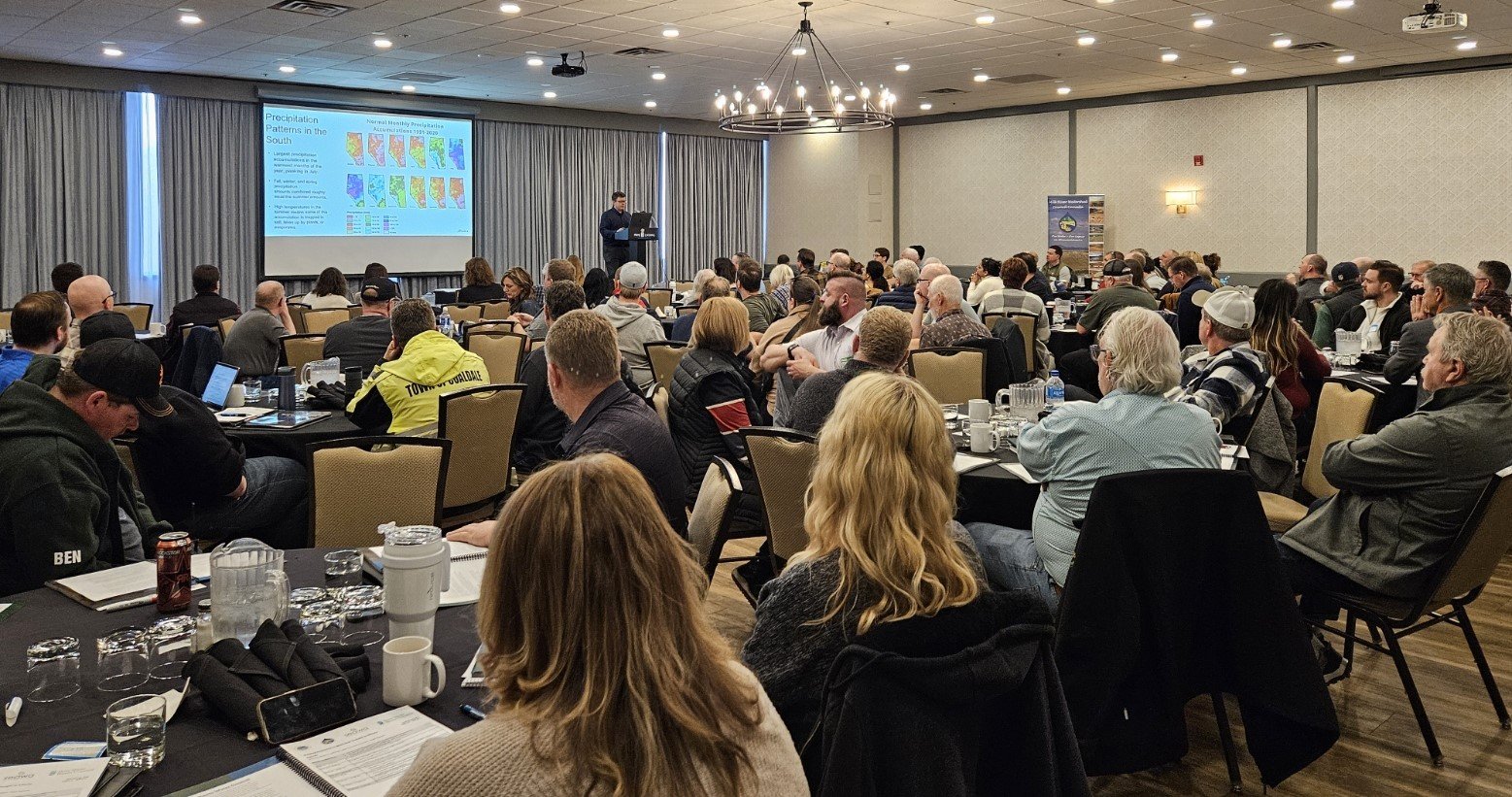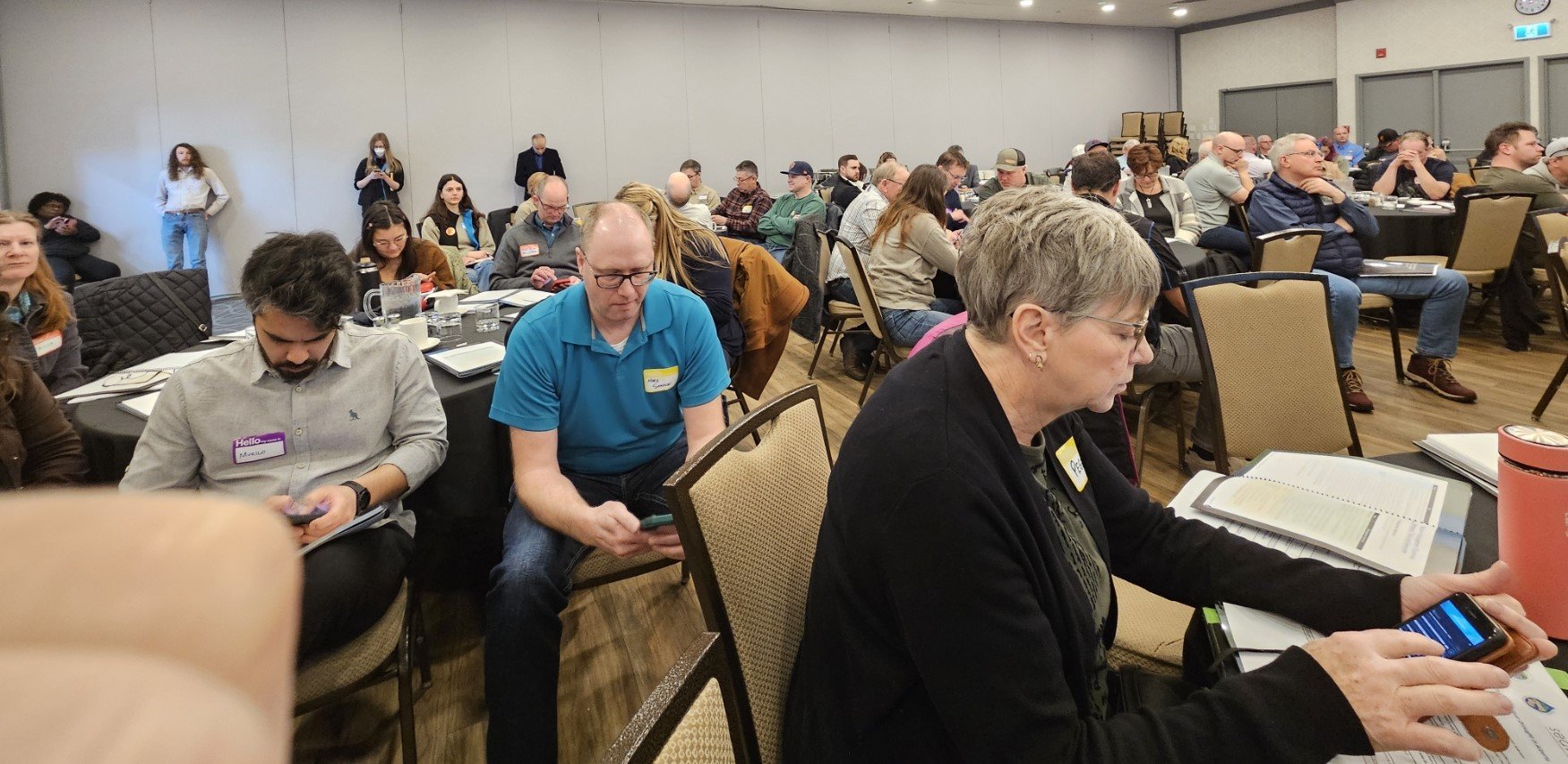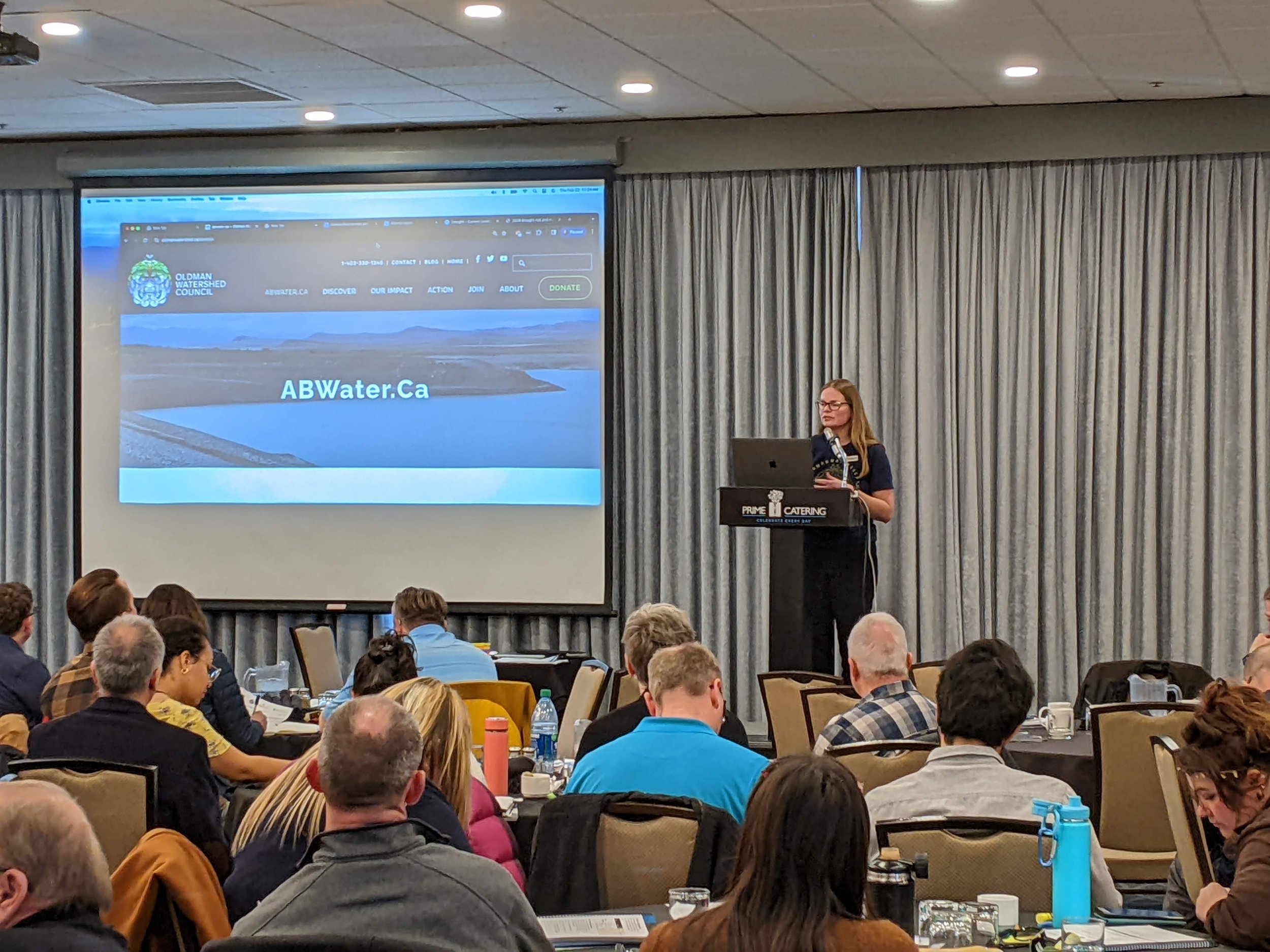This is blog #6 in our "Understanding Drought" series, where we dive deep into Alberta's current drought situation. Keep an eye on ABWater.ca for more blogs, videos, and the latest information.
Blog and banner photo by Maria Albuquerque.
On February 29th, the Building Multi-Year Drought Resiliency Workshop was hosted by four southern Watershed Planning and Advisory Councils (WPACs): Oldman Watershed Council, South East Alberta Watershed Alliance, Milk River Watershed Council Canada, and Bow River Basin Council. This workshop, designed by the Alberta Water Council (AWC) in alignment with 'Water for Life: Alberta's Strategy for Sustainability,' reflects a collective effort to enhance drought resilience. It was part of a series of 5 workshops hosted by WPACs in various locations across the province.
The Southern Alberta workshop welcomed a diverse group of participants, including several municipal and government representatives, council members, water utility managers, First Nations land managers, academic partners from colleges and universities, landowners, and community members. A total of 110 attendees gathered in the Aspen Ballroom at the Sandman Signature in Lethbridge, creating a vibrant forum for discussion and collaboration on water sustainability.
Full room at the Aspen Ballroom, at the Sandman Signature in Lethbridge, for the Drought Workshop. Photo by Maria Albuquerque
The workshop objectives were to:
Explore regional water shortages and the impact of droughts in Alberta.
Provide a platform for sharing valuable lessons learned from past droughts.
Offer access to resources and delve into current information, tools, and resources for effective drought management.
Prepare strategies that guide communities on how to respond before, during, and after multi-year droughts.
The workshop began with an explanation of what constitutes a drought and its impacts. This was followed by a presentation on the history of drought in Alberta, highlighting the province's cycles of wet and dry periods over the last thousand years. The executive directors of the four WPACs then presented updates on the status of drought and water conditions in each watershed. Attendees also had the opportunity to learn how to utilize the Alberta Rivers website and app for monitoring current water flow, precipitation maps, and reservoir levels.
Left: Mike Murray, Executive Director of the Bow River Basin Council, presents precipitation and soil moisture in Alberta maps. Photo by Maria Albuquerque.
Centre: Workshop participants download and browse the Alberta Rivers app. Photo by Maria Albuquerque.
Right: Shannon Frank, Executive Director of the Oldman Watershed Council, presents “Communications Case Study” and the new platform, ABwater.ca. Photo by Sofie Forsström.
An integral component of the workshop was the utilization of the informative and practical guide, "Building Resiliency for Multi-Year Drought in Alberta," by the Alberta Water Council. This book serves as a comprehensive guide for small urban and rural communities, showcasing previous drought preparedness plans in Alberta. It includes current information, tools, and resources as references for communities facing multi-year or short-term droughts. The guide is thoughtfully organized into four modules, each focusing on different aspects of multi-year drought, and covers 12 themes on drought management. The themes addressed were:
Monitoring and Data
Planning for Drought
Supply Management
Demand Management
Land-Use Planning
Agriculture
Ecological Systems
Community and Health
Public Education
Collaboration
Emergency Management
Funding
Each theme consolidates information, case studies, and resources to assist municipalities in developing strategies before, during, and after a drought. This book is an invaluable resource for helping municipalities prepare for and respond to drought conditions.
You can read the Building Resiliency document here.
Tim Romanow, Milk River Watershed Council Canada Executive Director, explained each section of the book and how to use them with space for questions after each section. Photo by Maria Albuquerque.
Share what you know!
The workshop culminated in a hands-on activity during the final session, where participants were divided into breakout groups. Each group, equipped with a facilitator, focused on two of the 12 themes, tasked with devising a table of strategies for managing drought within those themes. Participants were encouraged to use insights gained from the book and discussions with one another to plan for pre-drought, during-drought, and post-drought scenarios. The groups explored various drought management ideas within each theme, followed by a collaborative session where they shared their findings with the rest of the attendees. This session provided a valuable opportunity for different municipalities to exchange strategies and lessons learned from their experiences, fostering a supportive environment for asking for help and collaboration.
Participants engaged in the breakout groups and water-sharing strategies and policies from their municipalities. Photo by Sofie Forsström.
We hear you!
A short evaluation survey was conducted post-event both in paper and online formats.
Overall, participants appreciated the presentations, facilitators, and the content delivered. Nearly 90% of the respondents agreed that the event increased their knowledge of drought management strategies. “Well presented” and “easy to digest” are a few examples of the positive comments from the survey participants. The guidebook was highlighted as a “great resource” with “all case studies and the step-by-step framework.”











